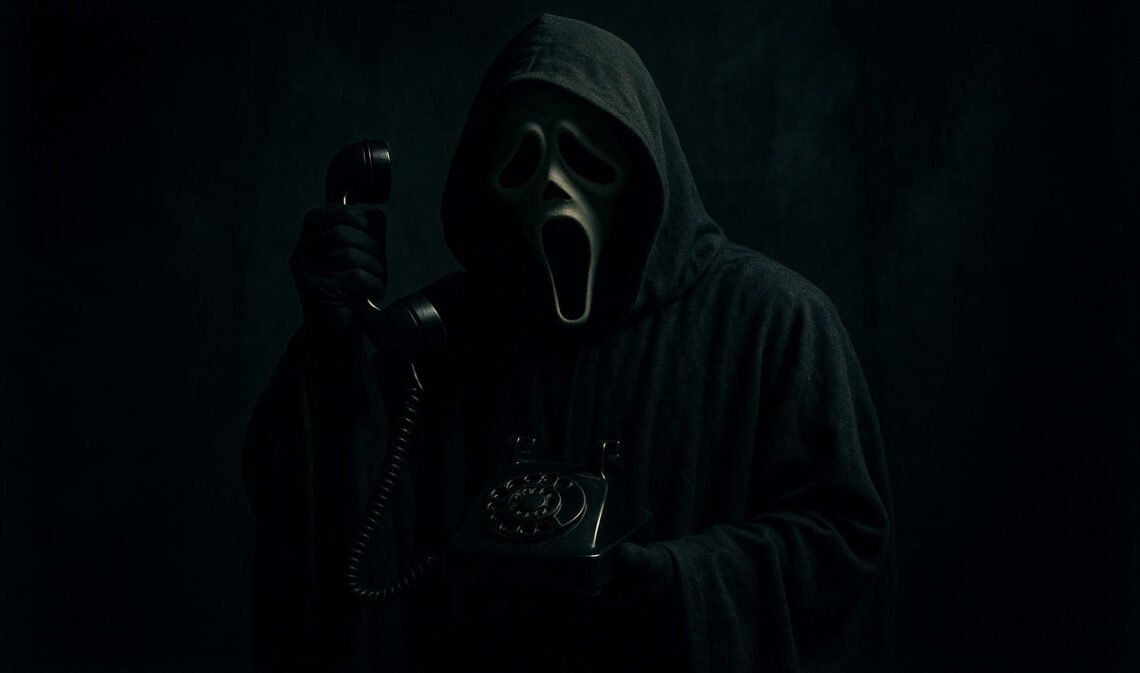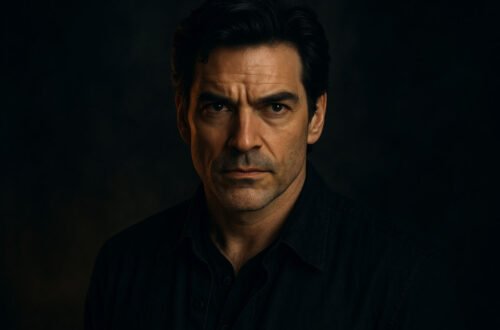The Birth of Meta-Horror: How Scream Saved a Dying Genre
By the mid-1990s, the horror genre felt like it was on its last legs. The once-mighty slasher movie had become a parody of itself, churning out predictable sequels that lacked the terror of the originals. Icons like Michael Myers and Jason Voorhees were running on fumes.
Then, in late 1996, director Wes Craven and writer Kevin Williamson delivered Scream, a film that didn’t just play by the rules of horror—it tore the rulebook to shreds in front of the audience. This was the mainstream arrival of meta-horror, a jolt of pure adrenaline the genre desperately needed.
Scream wasn’t just another slasher. It was a whip-smart, genuinely terrifying, and often hilarious deconstruction of the very tropes that had made horror feel so tired. It knew it was a movie, and it used that knowledge to create a new kind of fear.
Deconstructing the Franchise: A Guide to the Scream Movies
The incredible longevity of the Scream movies comes from their constant state of reinvention. The franchise has surfed the waves of horror trends for decades by adapting its formula while always staying true to its self-aware core.
The Original Trilogy (1996-2000)
The first three films laid the foundation. Scream (1996) was the lightning-in-a-bottle original that introduced the world to Sidney Prescott, the iconic Ghostface, and the famous rules for surviving a scary movie.
Scream 2 (1997) did the impossible, delivering a sequel that many fans argue is even better than the first. It brilliantly satirized the very idea of horror sequels while crafting its own masterful suspense. Scream 3 (2000) shifted the meta-commentary to Hollywood, offering a satirical jab at the film industry, though its lighter, more comedic tone divided some fans.
The Revival Era (2011-Present)
After a long break, Scream 4 (2011) brought Ghostface back for a new generation. In his final film, Wes Craven offered a sharp commentary on internet fame and the dawn of social media. The film proved the franchise was still incredibly relevant.
This was followed by Scream (2022), a soft reboot or “requel” that masterfully handed the story to a new cast while paying deep respect to the original characters. Most recently, Scream VI (2023) took the carnage from the small town of Woodsboro to the sprawling chaos of New York City, proving Ghostface is a threat no matter the location.
The Genius of Self-Aware Horror: What Makes Scream Different
What makes the Scream movies so special is their intelligence. The people in these films have seen scary movies. They know the clichés, they understand the formulas, and they desperately try to use that knowledge to stay alive. This creates a unique connection between the characters and everyone watching them.
This idea is perfectly captured in the character of Randy Meeks, the film geek who lays out the “rules” of the genre. His running commentary acts as a guide for both the characters and the audience, adding a layer of fun and intellectual engagement that most slasher films lack.
But for all its winking at the camera, Scream never forgets its primary job: to be scary. The films walk a tightrope between satire and pure terror. Knowing the rules doesn’t guarantee survival; it just makes the inevitable bloodshed feel all the more clever and cruel.
Sidney Prescott: The Ultimate Final Girl
At the very soul of the Scream franchise is Sidney Prescott. Neve Campbell plays her with a raw, powerful depth that makes Sidney more than just a typical horror heroine. She is a woman defined by unimaginable trauma, but she absolutely refuses to be a victim.
Over the course of five films, we watched Sidney grow from a terrified high school student into a hardened survivor and warrior. She confronts her past head-on, fights back against every new killer, and reclaims her own story. It remains one of the most compelling character arcs in horror history.
Sidney Prescott completely redefined what a “final girl” could be. She isn’t just a survivor; she’s a fighter who looks her monsters in the eye.
Ghostface: The Human Monster That Changed Horror
Before Scream, the most famous slashers were supernatural forces like Michael Myers or Jason Voorhees. They were unkillable monsters. Ghostface was different. Underneath that iconic mask was always just a person—or, in a classic Scream twist, two people.
This simple change made the killer infinitely more terrifying. The monster wasn’t a myth; it was your boyfriend, your best friend, your classmate. The whodunit mystery became just as important as the body count, turning every character into a potential suspect.
The Ghostface mask itself, inspired by Edvard Munch’s painting “The Scream,” became an instant piece of pop culture iconography. It’s a hauntingly blank expression of terror, reflecting the anonymity of the killer and our universal fear of the unknown face in the crowd.
Cultural Impact: How Scream Rewrote the Rules of Horror
The influence of Scream on the horror genre is impossible to overstate. It almost single-handedly revived the slasher film and kicked off a new wave of self-aware horror in the late 90s. Movies like I Know What You Did Last Summer and Urban Legend were born from the blueprint Scream created.
That influence is still felt today in what many call “elevated horror.” Modern filmmakers like Jordan Peele (Get Out) have pointed to Scream‘s smart blend of social commentary and genre deconstruction as a key inspiration. The current horror renaissance, with its focus on intelligent, socially relevant stories, stands on the shoulders of Wes Craven’s masterpiece.
Scream taught a generation of moviegoers and creators to be more analytical about the stories they consume. It proved that a horror movie could be both wildly entertaining and incredibly smart.
Box Office and Critical Legacy
The Scream franchise has been a box office juggernaut, pulling in over $900 million worldwide. This financial success speaks to its lasting power and its ability to connect with audiences across multiple generations.
Critically, the series has also earned high praise, especially the first two films and the recent revival. It’s a rare feat for any horror franchise to maintain such a level of quality and relevance for more than 25 years.
This enduring success has cemented Scream‘s place in the pantheon of great horror franchises. It’s more than just a series of movies; it’s a cultural touchstone that has truly stood the test of time.
The Future of the Franchise: Ghostface Lives On
With a seventh film in the works, the Scream story is far from over. The franchise has proven its unique ability to adapt and evolve, leaving endless possibilities for where it could go next.
As long as there are scary movies, there will be tropes to subvert and rules to rewrite. The genius of Scream is that it’s a franchise that comments on the very nature of franchises. As long as it holds onto that self-aware spirit, Ghostface will be scaring audiences for many years to come.





